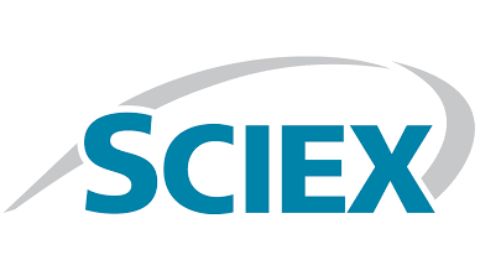The analysis of cerebral spinal fluid (CSF) is extremely valuable for diagnosing neurological disorders and diseases.
CSF is the is the closest matrix available to monitor changes in the brain; however, the volume available is extremely limited as several biomarker assays typically need to be performed on a single sample.
This app note highlights the use of HILIC-MS to detect two biomarkers for diseases such as Krabbe and Gaucher disease in lower volumes of CSF.
Download this app note to discover a system that:
- Enhances the sensitivity of biomarker analysis in CSF
- Demonstrates good accuracy and linearity
- Shows improved signal/noise ratios compared to older systems
p 1
For research use only. Not for use in diagnostics procedures.
Sensitive bioanalysis of galactosyl sphingosine (GalSPH) and
glucosyl sphingosine (GluSPH) in cerebral spinal fluid
Using the SCIEX 7500 system
Jack Steed1
, Jessica Smith1
, Freddy Oostebring2
, Jianru Stahl-Zeng3
1SCIEX, UK; 2Ardena Bioanalysis Assen, The Netherlands; 3SCIEX, Germany
GalSPH and GluSPH are useful biomarkers for several diseases
such as Krabbe and Gaucher disease as well as being a
potential marker for carriers of heterozygous mutated GBA1
gene, which increases the risk of Parkinson’s.
1,2 Therefore, it is
important to be able to accurately monitor these compounds
within the brain. Cerebral spinal fluid (CSF) is analyzed for
GalSPH and GluSPH due to being the closest matrix available to
monitor changes in the brain. However, the volume available is
extremely limited as typically several biomarker assays need to
be performed on a single sample. Therefore, it is important to
have as much sensitivity as possible to ensure that lower
volumes of CSF can be used.
Currently, this analysis is performed by Ardena Bioanalysis
Assen using the SCIEX Triple Quad 6500+ system but, due to
the increased sensitivity available with the SCIEX 7500 system,
a comparison study to evaluate impact was performed. The
objective was to assess whether the increase in sensitivity allows
for lower CSF volumes to be analyzed.
The analysis was performed using HILIC chromatography to
provide separation between the two isomers (Figure 1), with the
triple quadrupole mass spectrometers being operated in positive
mode (electrospray ionization) using MRM acquisition.
Methods
Sample preparation: Standards for galactosyl sphingosine
(GalSPH) and glucosyl sphingosine (GluSPH) and their
deuterated internal standards, GluSPH-D5 and GalSPH-D5, were
obtained from Avanti Polar Lipids. Extracted standards and
cerebral spinal fluid (CSF) samples were prepared by Ardena
Bioanalysis. Standards were prepared in surrogate CSF across a
range of concentrations suitable for analyzing endogenous levels
of the CSF samples, with the deuterated internal standards held
add a constant concentration. The samples were then split to be
analyzed on both the SCIEX Triple Quad 6500+ and SCIEX
7500 systems.
LC-MS analysis: Samples were analyzed using both the
QTRAP 6500+ system and the SCIEX 7500 system. Separation
of Gal-and Glu-SPH was achieved using HILIC chromatography.
MRM analysis was performed using electrospray ionization in
positive polarity.
Data processing: Datasets were processed using both SCIEX
OS software and Analyst software.
Figure 1. Extracted ion chromatograms (XIC) of GluSPH and
GalSPH. Using HILIC chromatography, good separation, and peak
shape of the two isomers was achieved. Both compounds are
analyzed using the same MRM transition and so chromatographic
separation is paramount.
GluSPH
GalSPH
p 2
For research use only. Not for use in diagnostics procedures.
Results
To compare the sensitivities between the two systems, a set of
standards and CSF samples were prepared by Ardena
Bioanalysis Assen before being divided and analyzed on both
MS systems. Figure 2 highlights the calibration curves obtained
for GluSPH and GalSPH on the SCIEX 7500 system across a
concentration range between 0.001 – 1.000 pmol/mL. Both
provided an r value >0.99, with accuracies between 80 – 120%
at each level (Table 1), providing good linearity across the 3
orders of dynamic range studied. A similar concentration curve
was generated on the QTRAP 6500+ system (data not shown).
The %RSD and calculated concentrations for the bottom four
surrogate CSF standards are also detailed in Table 2 highlighting
that the %RSD values are below acceptable criteria of 10%.
The sensitivity difference between the two systems was next
assessed by using peak-to-peak S/N with similar noise regions,
across the concentration curves. A summary is shown in Table 3
for GluSPH and Table 4 for GalSPH. The S/N increase was
found to be between 2.4 and 6.7x, with improvements seen
across the concentration range analyzed.
Table 1. The % accuracy values for GalSPH and GluSPH on the
SCIEX 7500 system. The accuracy values calculated from the calibration
curve generated in surrogate CSF were within 80-120% for all
concentrations analyzed.
Concentration (pmol/mL) % Accuracy
(GluSPH)
% Accuracy
(GalSPH)
0.001 101.23 103.21
0.002 96.08 99.03
0.005 103.61 86.66
0.010 99.92 97.04
0.020 100.19 110.23
0.040 101.06 105.15
0.100 103.81 100.55
0.200 97.13 106.42
0.400 100.49 112.73
1.000 94.81 107.08
Table 2. The %RSD and average calculated concentrations for
GalSPH and GluSPH on the SCIEX 7500 system. The peak area
%RSD was calculated for the bottom 4 concentrations (n=3) and was
below acceptable criteria of 10% at each level assessed. The average
calculated concentration (pmol/mL) was derived based on the calibration
curve analyzed to show similarity to the theoretical values.
Concentration
(pmol/mL)
%RSD of
area
(GluSPH)
Average
calculated
concentration
(GluSPH,
pmol/mL)
%RSD of
area
(GalSPH)
Average
calculated
concentration
(GalSPH,
pmol/mL)
0.0010 8.75 0.0010 4.07 0.0010
0.0020 8.97 0.0019 1.48 0.0020
0.0050 8.08 0.0052 3.14 0.0043
0.0100 4.13 0.0100 1.73 0.0097
Figure 2, Calibration curves using the SCIEX 7500 system.
Calibration curves for both GluSPH (top) and GalSPH (bottom) were
generated in surrogate CSF. Both have an r value > 0.99 and use a 1/X2
weighting, with a range between 0.001 – 1.000 pmol/mL. Results were
obtained using internal standard correction with the deuterated forms of
the analytes (GluSPH-D5 and GalSPH-D5).
Table 3. Signal/Noise improvement for GluSPH. The peak-to-peak S/N
for GluSPH was measured at selected concentrations across the
calibration curves for both the SCIEX 7500 system and the QTRAP 6500+
system. The peak-to-peak S/N improvement is between 2.4 and 6.5x.
Concentration
(pmol/mL)
SCIEX 6500+
system - S/N
(GluSPH)
SCIEX 7500
system - S/N
(GluSPH)
S/N
improvement
1.000 6233 21850 3.5x
0.020 119 284 2.4x
0.001 10 65 6.5x
p 3
For research use only. Not for use in diagnostics procedures.
Conclusions
• Sensitivity for two glycosphingolipids, galactosylsphingosine
(GalSPH) and glucosylsphingosine (GluSPH) were evaluated
in cerebral spinal fluid (CSF)
• Two MS systems were evaluated, the QTRAP 6500+ system
was compared to the SCIEX 7500 system
• Improvements in S/N of between 2.4 and 6.7 x were achieved
on the SCIEX 7500 system, as compared to the QTRAP
6500+ system
• Good accuracy and linearity were observed across the range
evaluated on the SCIEX 7500 system.
• Improved S/N at similar concentrations of the standards in
matrix suggests that lower volumes of CSF could be used in
this assay on the SCIEX 7500 system, this hypothesis will be
evaluated next.
• Based on the results, it is concluded that the objective to
increase the sensitivity is met. Based on the improved S/N
seen on the SCIEX 7500 system when compared to similar
analysis on the SCIEX Triple Quad 6500+ System it may be
possible to reduce the required assay volume of CSF for this
method when using the SCIEX 7500 system.
References
1. Rohini Sidhu et al. (2018). A HILIC-MS/MS Method for
Simultaneous Quantification of the Lysosomal Disease
Markers Galactosylsphingosine and Glucosylsphingosine in
Mouse Serum. Biomedical Chromatography. 32(7). e4235.
2. Matthew Surface et al. (2021). Plasma Glucosylsphingosine
in GBA1 Mutation Carriers with and without Parkinson's
Disease. Mov Disord. 10. 1-6.
Table 4. Signal/Noise improvement for GalSPH. The peak-to-peak
S/N for GalSPH was measured at selected concentrations across the
calibration curves for both the SCIEX 7500 system and the QTRAP
6500+ system. As can be seen the peak-to-peak S/N improvement is
between 3.2 and 6.7x.
Concentration
(pmol/mL)
SCIEX 6500+
system - S/N
(GalSPH)
SCIEX 7500
system – S/N
(GalSPH)
S/N
improvement
1.000 6283 33324 5.3x
0.020 122 388 3.2x
0.001 6 40 6.7x
The SCIEX clinical diagnostic portfolio is For In Vitro Diagnostic Use. Rx Only. Product(s) not available in all countries. For information on availability, please contact your local sales representative or
refer to https://sciex.com/diagnostics. All other products are For Research Use Only. Not for use in Diagnostic Procedures.
Trademarks and/or registered trademarks mentioned herein, including associated logos, are the property of AB Sciex Pte. Ltd. or their respective owners in the United States and/or certain other
countries (see www.sciex.com/trademarks).
© 2022 DH Tech. Dev. Pte. Ltd. RUO-MKT-02-14364-A.



